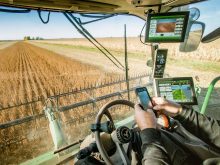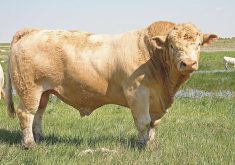TARGETING SUCCESS Social media expert says there are a host of ways to connect with consumers who want the goods or services you are selling
You don’t need a horde of Twitter followers or Facebook friends to attract consumers to your farm business — as long as you have a strong story to tell.
“We no longer have to cast a big fishing net, hoping to catch something,” Laura Bodell of Bella Spur Innovative Media said at the recent Ranching Opportunities conference in Olds.
But whether you’re using social media or old-fashioned ads in newspapers, radio or TV, successful marketing starts with having a solid grasp of what makes your product different from your competition, she said.
Read Also

Grazing ‘sweet spot’ boosts pasture performance
Timing-focused approach to pasture management touted to boost forage growth, livestock gains while also cutting farmer labour and inputs
“That factor is you and your why,” Bodell said.
The ‘why’ is what drives you to conduct your business the way you do, and what kind of a difference you’re trying to make in the marketplace, she said.
“In agriculture especially, our story is very personal,” Bodell said. “I love agricultural stories and I would love to see them being told.”
Once you know what you want to say, make sure you’re targeting the right audience — lots of advertising dollars are wasted talking to the wrong people in the wrong way, she said.
When it comes to online interactions, promote your industry first, your particular sector second, and your individual business third, she said.
“We can’t build consumer confidence by tearing down other parts of our industry,” she said.
Because social media and the Internet allow you to interact with customers directly, Bodell said engaging consumers should become part of producers’ daily routine. But she cautioned against going for the “hard sell” online, recommending instead offering information about their business, but also general items of interest to your readers.
When it comes to Facebook, Bodell suggested posting twice as many items of interest as things about your business. Users should ensure visual branding is consistent, and Facebook’s advertising system can help really target your audience. Twitter, with millions of active users, is another “must-have tool.”
“Twitter’s the first medium news breaks on,” she said.
Even though tweets only allow 140 characters per post, they’re a good way to educate consumers about food and influence their buying decisions.
“Twitter holds tremendous potential for agriculture,” she said.
If you’re blogging, ensure entries aren’t too long and are easy to read.
“They don’t come to a blog to read a novel,” she said.
She also recommended considering using Google Plus. Even though it is not as well known as other social media sites, it is still important because it can have impact within the search engine.
Other online platforms to consider include the video-sharing site YouTube; Pinterest, which Bodell said is now used as a recipe book for many women; photo-sharing site Instagram; and Foursquare, a location-based social networking site that is especially useful for businesses with a storefront.
And yes, websites are no longer optional. They must also be visually engaging, have consistent branding, and be updated regularly, she said.
“It’s the first place where existing or potential customers are going to look for you,” she said.














